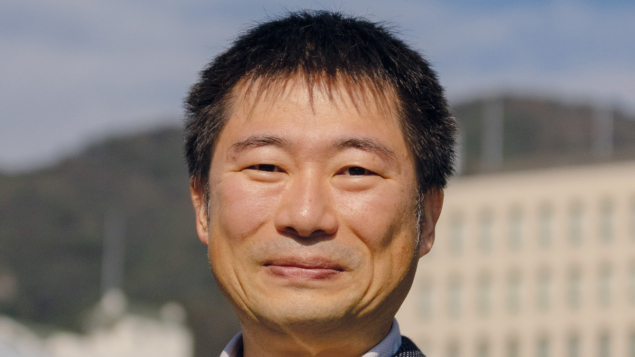
Atsuhiko Ochi, a brilliant, passionate detector and experimental physicist, passed away on 29 April 2024 at the untimely age of 54. A source of innovative ideas at the forefront of radiation detectors, he made outstanding contributions to the development of micropattern gaseous detectors (MPGDs) that are recognised worldwide. He was also a distinguished lecturer whose inexhaustible passion, dedication and remarkable character captivated the many students he mentored.
Atsuhiko began his research at the Tokyo Institute of Technology, initially focusing on large-area avalanche photodiodes as fast photon and soft X-ray detectors. In 1998 he defended his PhD thesis “Study of Micro Strip Gas Chamber as a Time-Resolved X-ray Area Detector”, earning the second High Energy Physics Young Researcher’s Award from the Japan Association of High Energy Physicists. In 2000, alongside Toru Tanimori, he introduced the micro pixel chamber (micro-PIC), a new gaseous detector for X-ray, gamma-ray and charged-particle imaging. It was fully developed using printed circuit board technology and free of floating structures like wires, mesh or foils, featuring a pin-shaped anode surrounded by a ring-shaped cathode.
In 2001 Atsuhiko moved to Kobe University, where he joined the ATLAS experiment and devoted his efforts to commissioning the ATLAS thin gap chambers (TGCs). He was also in charge of integrating the front-end electronics on the KEK TGC detectors and of detector quality assurance and control. Later, at CERN, he led the acceptance quality control of the ATLAS TGCs.
Atsuhiko could always merge his love for experiments with a passion for new ideas. “We need new ‘eyes’ to catch a glimpse of science’s frontier”, he once said. Along with his group in Kobe, while making significant contributions in ATLAS to the design and construction of the new large resistive micromegas for the Muon New Small Wheel, he conducted R&D on the use of sputtered layers of diamond-like carbon (DLC) as resistive elements to quench discharges and played a crucial role in connecting with Japanese industry. He was among the first to test the technology with micromegas, apply it to the micro-PIC detector, and pioneer its use as electrodes for the novel resistive plate chambers he proposed for the MEG II experiment. He supported the use of DLC in the final TPC micromegas of the near detectors of the T2K experiment while serving as a liaison person with BE-Sput in Kyoto. DLC is now the predominant approach in most new resistive MPGD detectors.
In his research, Atsuhiko always placed great emphasis on mentoring students and giving them access to a worldwide community of experts, facilities and experiments. He meticulously shared all relevant research conducted by Japanese colleagues, ensuring proper visibility and recognition for his community. This has been crucial in the international RD51 collaboration on MPGD technologies, within which he played a significant role in its formation and management. During the transition from the MPGD-based RD51 collaboration to the upcoming DRD1, which encompasses a broader scope of technologies and applications, Atsuhiko made a crucial contribution by maintaining strong ties with the Asian community.
Atsuhiko’s vibrant enthusiasm and infectious smile leave an irreplaceable void. His departure is a profound loss, leaving behind a loving wife and two children.








